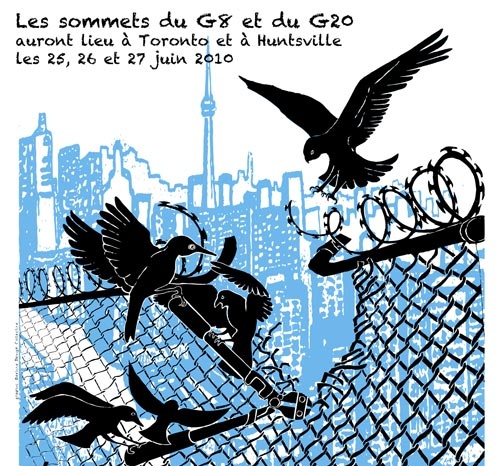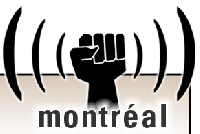 |
 |
 |
 |
 |
 |
|
 |
 |
 |
 |
 |
 |
 |
Régions du Québec |  |
 |
 |
|
 |
 |
|
 |
 |
|
 |
 |
 |
 |
 |
 |
Rubriques (sujets) |  |
 |
 |
|
 |
 |
|
 |
|
 |
 |
 |
The Free Trade Area of the Americas: Hemispheric Forest Threat
What is the Free Trade Area of the Americas? The Free Trade Area of the Americas (FTAA) is a free
trade and investment agreement being negotiated between the governments of North, Central and South
America and the Caribbean. It is modeled after the North American Free Agreement (NAFTA) between
North America, Canada and Mexico.
October 17, 2000
The Free Trade Area of the Americas: Hemispheric Forest Threat
What is the Free Trade Area of the Americas? The Free Trade Area of the Americas (FTAA) is a free trade and investment agreement being negotiated between the governments of North, Central and South America and the Caribbean. It is modeled after the North American Free Agreement (NAFTA) between North America, Canada and Mexico.
Negotiations are scheduled for completion in 2005. However, negotiators claim to be ahead of schedule and expect that a draft text will be completed by the end of this year. Presidential candidates George Bush and Al Gore have expressed plans to push swiftly ahead with the FTAA upon taking office.
The goal of the FTAA is to create a free trade and investment zone that extends from northern Canada to the southern tip of Chile. As with NAFTA, "free trade and investment" means reducing government regulations on corporations, opening markets to foreign competition and expanding trade in all products, including forest products. In fact, it appears that the FTAA will include a "Global Free Logging Agreement" like that proposed and thus far defeated at the World Trade Organization.
We can use NAFTA as a model to predict the impact of the FTAA on forests. After signing NAFTA, all three NAFTA countries lowered protections for forests and biodiversity; fifteen U.S. forest product companies set up new operations in Mexico taking advantage of lower environmental and labor safeguards; and one U.S. corporation, Boise Cascade, has been linked to extreme human rights abuses against forest protection activists in Mexico. Boise Cascade has also been blocked in its plans to open the world's largest chip mill in the heart of Chile's endangered rainforests by Chilean and U.S. citizen opposition. However, the FTAA could be the silver bullet the company needs to push their plans to completion.
The FTAA would promote unbridled hemisphere-wide consumption of forest products without a single forest or biodiversity safeguard. U.S. negotiators expect that the FTAA will also include investment liberalization initiatives like those included in NAFTA and the ill-fated Multilateral Agreement on Investment (MAI) that allow corporations to sue governments if environmental laws cause their properties to lose economic value.
A "Global Free Logging Agreement" in the FTAA?
A Global Free Logging Agreement Would:
(A) 1. Eliminate tariffs on forest products, which would
2. Increase consumption of forest products, which would
3. Increase production of forest products, which would
4. Increase unsustainable logging, which would
5. Further decimate the world's endangered native forests.
(B) 1. Threaten forest protections by labeling them "non-tariff trade barriers," which could
2. Threaten forest protections such as recycled content and eco-labeling laws that reduce consumption and encourage sustainable forestry practices, which would
3. Tie the hands of people reforming current unsustainable practices, which would
4. Further decimate the world's endangered native forests, which would
5. Cause global deforestation and loss of biodiversity.
The Clinton Administration has spear-headed negotiations at the World Trade Organization (WTO) on a proposal dubbed by forest advocates as the "Global Free Logging Agreement (GFLA)." After losing its bid (for now) to have the GFLA at the WTO, the Administration appears to have set its sites on the Free Trade Area of the Americas (FTAA) as a new venue to push for the proposal which threatens forests and biodiversity.
In fact, a representative of the United States Trade Representative's office confirmed that the FTAA Market Access Negotiating Group is negotiating tariff elimination and non-tariff trade barrier (|NTB) removal for forest products. NTBs are forest and species protections that are argued to interfere with free trade.
Tariff elimination could increase the consumption of forest products, while the elimination of NTBs could threaten existing and future forest protection laws and initiatives. Current logging practices have decimated the world's forests. An increase in such unsustainable practices caused by the GFLA will hasten the deforestation of the world's native forests.
With a GFLA, U.S. laws designed to protect forests, the environment and small locally owned mills can be challenged under the FTAA as NTBs. If challenged and defeated, these laws would have to be eliminated or the U.S. would face costly trade sanctions. The record of trade agreements vs. the environment thus far proves that when faced with a trade-off between "free trade" and environmental protection -- the environment always losses. The GFLA will put these laws are greater risk through the FTAA.
Forest protections that could be threatened include a ban on the export of raw logs from federal and most state lands to protect small local mills and reduce logging; federal and state green procurement laws such as those requiring the use of recycled paper; eco-labeling and certification laws used to identify environmentally friendly products such as sustainably harvested wood; and laws to protect against invasive species invasions.
What You Can Do
Learn more and get involved in the campaign to protect forests from international trade and investment agreements such as the FTAA by contacting American Lands Alliance at (202) 547-9095. You can also join American Lands and other activists from around the world in Quebec, Canada, April 20-22, 2001, for protest, education and organizing events at the Summit of the Americas when governments meet to finalize the FTAA.
 |
 |
 |
 |
Dossier G20 |  |
 |
 |
|
 |
 |
|
 |
Nous vous offrons plusieurs reportages indépendants et témoignages...

Liste des activités lors de ce « contre-sommet » à Toronto Vous pouvez aussi visiter ces médias alternatifs anglophones... Centre des médias Alternatifs Toronto 2010.mediacoop.net Media Co-op Toronto http://toronto.mediacoop.ca Toronto Community Mobilization www.attacktheroots.net (en Anglais) |
 |
 |
 |
 |
 |
 |
 |
CMAQ: Vie associative |  |
 |
 |
|
 |
 |
|
 |
 Collectif à Québec: n'existe plus. Impliquez-vous ! |
 |
 |
 |
 |
 |
 |
 |
 |
|
 |
 |
 |
Ceci est un média alternatif de publication ouverte. Le collectif CMAQ, qui gère la validation des contributions sur le Indymedia-Québec, n'endosse aucunement les propos et ne juge pas de la véracité des informations. Ce sont les commentaires des Internautes, comme vous, qui servent à évaluer la qualité de l'information. Nous avons néanmoins une
Politique éditoriale
, qui essentiellement demande que les contributions portent sur une question d'émancipation et ne proviennent pas de médias commerciaux.
This is an alternative media using open publishing. The CMAQ collective, who validates the posts submitted on the Indymedia-Quebec, does not endorse in any way the opinions and statements and does not judge if the information is correct or true. The quality of the information is evaluated by the comments from Internet surfers, like yourself. We nonetheless have an
Editorial Policy
, which essentially requires that posts be related to questions of emancipation and does not come from a commercial media.


